Laser Lens Replacement vs Laser Cataract Surgery

While LASIK remains the most popular option for correcting vision, for those with a high level of correction or an abnormal cornea, lens-based refractive surgery such as clear lens extraction or Phakic IOL implantation may be better alternatives.
Unlike LASIK or PRK, Laser lens exchange can correct almost any degree of correction, just as long as suitably powered lenses are available.
Laser lens exchange uses the same successful and familiar techniques developed for cataract surgery to treat refractive errors. As a result, one might think Laser lens exchange is simply cataract surgery by another name. That may be so, however if being performed for the purposes of eliminating the need for glasses, then there are many other aspects to consider.
As laser lens exchange is performed solely for the purposes of vision correction, there is a need for accuracy on all fronts, from accurate measurements of the dimensions of the eye, through to the lens calculation. The choice of lens implant is also vital and much depends on the findings at consultation as well as visual needs and the current state of each eye’s optical system.
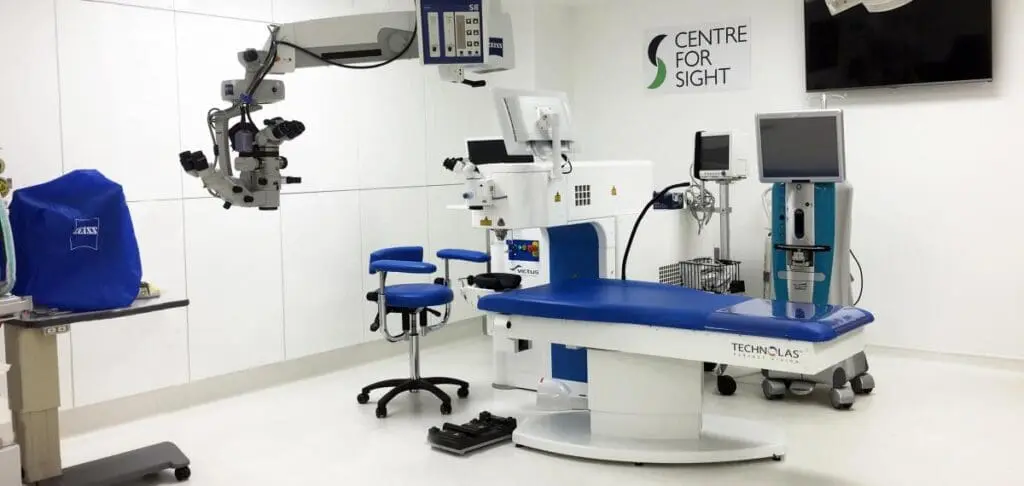
Cateract Surgery: The Most Common Elective Operation in Medicine.
Cataract surgery is the most common elective operation in medicine. Over 400,000 procedures are performed annually in the UK, mainly in the National Health Service (NHS). The operation involves removing the offending misty or cloudy natural lens (cataract) and like Laser lens exchange, replacing this with an intraocular lens (IOL).
In the NHS, the lens typically used is a monofocal lens implant and this may not be calculated with the same level of detail. As a result, patients will obtain improved vision from both having their cloudy lens removed as well as hopefully better distance vision, however they will be dependent on glasses for reading and possibly even intermediate vision.
So, What Are The Different Types of Lenses Available?
Monofocal fixed-focus IOLs.
Monofocal lenses can provide clear vision at distance, intermediate or near ranges — but not all three at once. Toric IOLs to correct astigmatism also are classified as monofocal IOLs.
Multifocal /Trifocal IOLs.
A multifocal lens provides clear vision at multiple distances.
Accommodating IOLs.
An accommodating IOL is a type of monofocal lens that enables focus at multiple distances by change in position in the eye. With intraocular lenses, there is no “one size fits all,” and your eye surgeon will recommend an IOL that is most suitable for your individual needs. Discover the perfect lenses for you! To get personalized eye procedure recommendations and more details.
Our Free assessment call is intended for informational purposes only. It does not replace a comprehensive consultation with an ophthalmic surgeon, who will provide the best options tailored to your specific needs.
Overview of Lenses
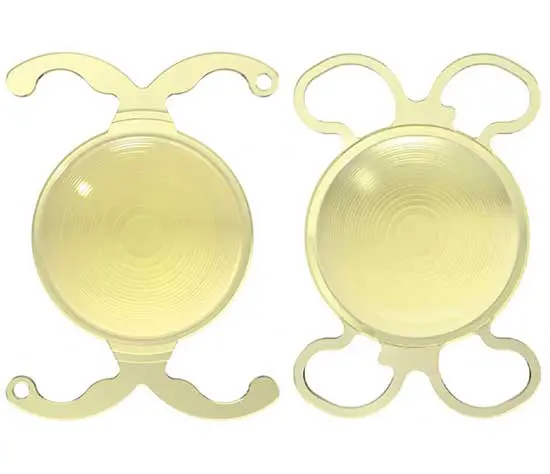
This is the most common type of lens used for full vision correction at Centre for Sight (since 2011) with more than 90% of patients undergoing lens surgery with this type of lens implant. The advantage of this lens is it reliably provides correction of distance, intermediate and near vision, in other words a full depth of focus, eliminating or reducing the need for glasses.
Suitability for the lens implant is determined at consultation when numerous tests including the optical properties of the cornea and tear film are evaluated. To work well, these high performance lenses require a cornea with good optical properties as well as a surface free of dryness and no streaky tear film. Patients must understand the concept of adaptation or neuro-adaptation which involves the brain becoming accustomed to the new sophisticated optical system to pick up and interpret useful information. The lens has microscopic rings which provide near and intermediate vision and as a consequence patients may well experience transient halos that disappear with adaptation. Visual ability also improves with time from gradual neuro-adaptation.
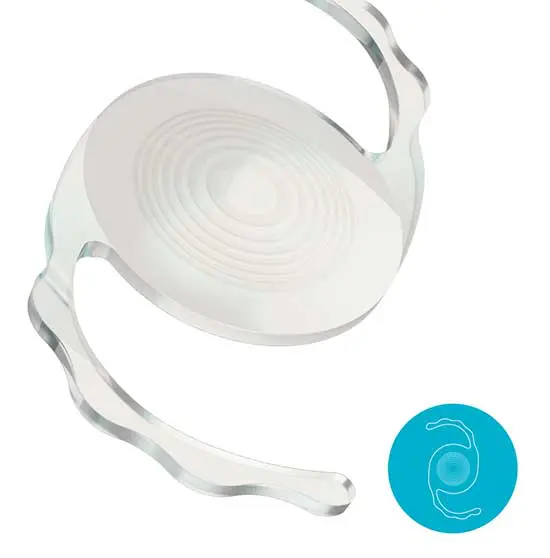
For those who have already had lens replacement / exchange or cataract surgery and were not lucky enough to have a trifocal lens, there is an option of adding in a trifocal lens implant on top of the existing lens. This is also available at primary cataract surgery. For instance if someone has Glaucoma or macular degeneration, they may in time have a problem with the presence of a trifocal implant and may require removal. As an add-on lens placed on top of a monofocal, the lens can easily be removed from the eye. It is however reassuring that multifocal lenses have been in use at Centre for Sight since 2002 and to date no lenses have required removal for glaucoma or macular degeneration.
In those who have a significant amount of astigmatism, trifocal lenses with inbuilt astigmatism can be used to correct vision at all distances (Full range of Focus). These multifocal / trifocal lenses are specially ordered based on specific measures taken at consultation. In terms of performance, these are otherwise identical to Trifocal lenses discussed above. About 30% of patients at Centre for Sight require toric lenses.
See – Sheraz M. Daya & Marcela Espinosa-Lagana: Visual & Refractive Outcomes of a New Hydrophobic Trifocal Intraocular Lens
This type of lens referred by some as an EDOF (Extended Depth of Focus) lens is one that reliably provides distance and intermediate vision. To improve the range of focus further, the non-dominant eye is adjusted so that this becomes very slightly short-sighted, and this provides most patients with near vision. The lens is considered in those who are unsuitable for Trifocals (a full range of focus lens). The type of IROF lens used at Centre for Sight has some advantages in that there are no significant halos, however some like with the trifocals still require a period of adaptation to obtain optimum use of the lenses.
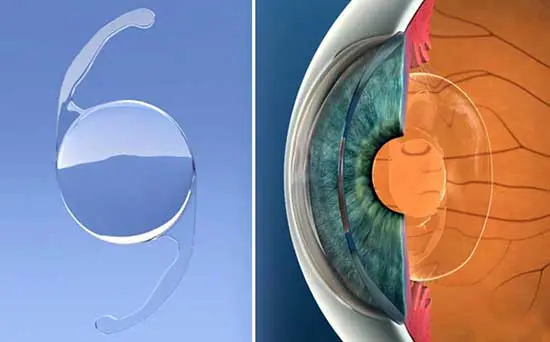
The single focus lens is used in conventional cataract surgery for instance in the NHS and vision is often geared for distance only which means recipients will in all probability require glasses for intermediate and near vision. Monovision is where the lens power can be adjusted to provide near vision in one eye (usually the non-dominant eye) and distance correction in the dominant eye. This provides good depth of focus between the two eyes and is very useful. For many the disparity between the two eyes is a nuisance and not everyone is able to get used to this option of Monovision sometimes also called Blended Vision.
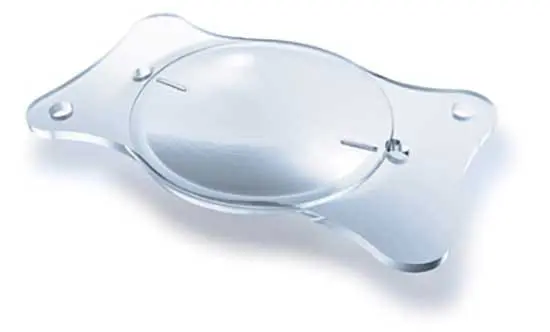
This is a lens that has astigmatism built in to the implant and used in those with astigmatism on their cornea of 1.25D and above. For those with less astigmatism, limbal relaxing incisions are at Centre for Sight performed using the laser employed in Lens replacement surgery. Toric lenses have to be specially ordered and sometimes need to be manufactured to suit the individual eye. This may increase the lead time for surgery. Toric lenses are available in combination with both Monofocal and Trifocal lenses.
Author Information
Authored by Sheraz Daya MD FACP FACS FRCS(Ed) FRCOphth, Consultant Ophthalmic Surgeon & Medical Director, June 2019.
Next review due August 2025